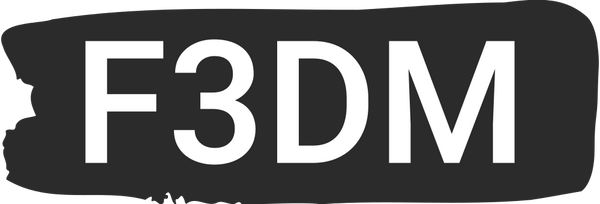The Ultimate Guide to Choosing a 3D Printer
When it comes to 3D printing, choosing the right printer is crucial. There are many different options on the market, each with their own unique features and capabilities. In this guide, we'll go over some of the key points to consider when choosing a 3D printer to help you make an informed decision.
1. Printing technology
There are several different technologies used in 3D printing, including FDM (Fused Deposition Modeling), SLA (Stereolithography), and SLS (Selective Laser Sintering). Each technology has its own characteristics and is suitable for different applications. For example, FDM printers are generally more economical and can print on a wider range of materials, but have lower precision compared to SLA or SLS printers. Consider the types of projects you will be working on and choose a printer that fits your needs.
2. Printing materials
Different 3D printers can print with different types of materials such as plastic, metal, ceramics and more. Consider the types of materials you need to print on and make sure the printer you choose is compatible with them. Some printers are limited to certain materials, while others can print with a wide variety of options. Identify your needs and choose a printer accordingly.
3. Print size
The size of the objects you want to print will determine the size of the printer you need. Consider the maximum print size you need and choose a suitable printer. Larger printers will generally be more expensive, but may be necessary for certain projects. On the other hand, if you only need to print small objects, a smaller printer may be better suited for your needs.
4. Precision
The precision of a 3D printer is measured in microns, and smaller numbers indicate higher precision. Consider the level of precision you need for your projects and choose a printer accordingly. Higher precision printers will generally be more expensive, but may be required for certain applications. On the other hand, if you don't need a high level of precision, you can save money by choosing a printer with a lower sensitivity.
5. Ease of use
Evaluate the level of experience you have with 3D printing and choose a printer that matches your skill level. Some printers are more user-friendly and easier to set up and use than others. If you're new to 3D printing, it may be worth investing in an easier-to-use printer to make the learning process smoother. On the other hand, if you're an experienced 3D printer, a more advanced machine might put you at ease.
6. Cost
Prices for 3D printers can range from a few hundred dollars to several thousand dollars. Determine your budget and choose a printer that fits your budget. Note that cheaper printers may have lower accuracy or be limited in the materials they can print on.
Considering these factors, you can choose a 3D printer that meets your needs and allows you to get the most out of your 3D printing projects.
Which 3D Printer Filaments Are Most Popular?
When it comes to 3D printing, choosing the right filament is just as important as choosing the right printer. Different filaments have different properties and are suitable for different applications, so choosing the right one for your project is important. In this article, we'll take a look at some of the most popular 3D printer filaments on the market and their features.1. ABS (Acrylonitrile Butadiene Styrene)
ABS is a strong and flexible plastic commonly used in 3D printing. It is known for its high impact resistance and toughness, making it a good choice for mechanical parts and functional prototypes. ABS is also relatively easy to print and has a slightly higher melting temperature than other common filaments such as PLA. However, it produces a strong odor when printing and requires a heated bed to print properly. It is also not as environmentally friendly as some other filaments.
2. PLA (Polylactic Acid)
PLA is a biodegradable plastic made from renewable resources such as corn starch and sugar cane. It is a popular choice for 3D printing due to its low printing temperature and minimal warping. It is also relatively easy to print and produces a much weaker odor than ABS. However, it is not as strong or flexible as ABS and may not be suitable for functional prototypes or mechanical parts. It is a good choice for prototyping and artistic projects.
3. PETG (Polyethylene Terephthalate Glycol)
PETG is a strong and durable plastic known for its transparency and high resistance to impacts and chemicals. It's a good choice for functional prototypes and end-use parts and is relatively easy to print. It has a higher melting temperature than PLA and does not produce any odors during printing. However, relative to some other filaments,may be more prone and require a heated bed to print properly.
4. PETT (Polyethylene Tephthalate)
PETT is a strong and flexible plastic similar to PETG but with a lower melting temperature. It is known for its transparency, high resistance to impacts and chemicals. It's a good choice for functional prototypes and end-use parts and is relatively easy to print. It does not produce any odors during printing and has good bed adhesion, making it less prone to warping than some other filaments. However, a heated bed may still be required to print properly.
5. Nylon
Nylon is a strong and flexible plastic known for its high impact resistance and toughness. It's a good choice for functional prototypes and end-use parts and is relatively easy to print. It has a high melting temperature and does not produce any odor during printing. However, it is more prone to warping than some other filaments and may require a heated bed and housing to print properly. Also more expensive than others

